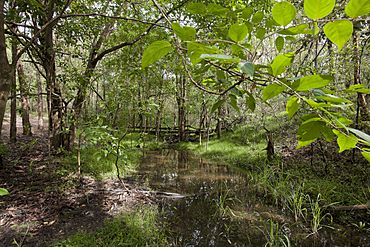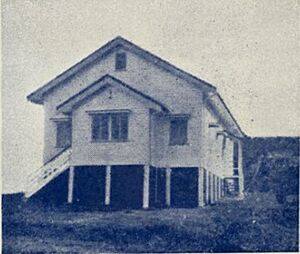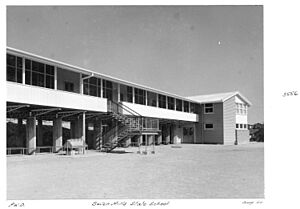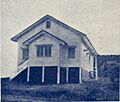Seven Hills, Queensland facts for kids
Quick facts for kids Seven HillsBrisbane, Queensland |
|||||||||||||||
|---|---|---|---|---|---|---|---|---|---|---|---|---|---|---|---|

Seven Hills Bushland Reserve
|
|||||||||||||||
| Population | 2,732 (2021 census) | ||||||||||||||
| • Density | 1,710/km2 (4,400/sq mi) | ||||||||||||||
| Postcode(s) | 4170 | ||||||||||||||
| Area | 1.6 km2 (0.6 sq mi) | ||||||||||||||
| Time zone | AEST (UTC+10:00) | ||||||||||||||
| Location | 7.8 km (5 mi) E of Brisbane CBD | ||||||||||||||
| LGA(s) | City of Brisbane (Morningside Ward) |
||||||||||||||
| State electorate(s) |
|
||||||||||||||
| Federal Division(s) | Griffith | ||||||||||||||
|
|||||||||||||||
Seven Hills is a suburb in the City of Brisbane, Queensland, Australia. It's a great place to live, located not too far from the heart of Brisbane. In 2021, about 2,732 people called Seven Hills home.
Contents
What is Seven Hills Like?
Seven Hills is located about 7.8 kilometres (or 4.8 miles) east of the main post office in Brisbane's city centre. It shares its borders with several other suburbs, including Camp Hill, Carina, Cannon Hill, Morningside, and Norman Park.
The Seven Hills of Seven Hills
Just like its name suggests, Seven Hills is known for its seven hills! These hills are actually named after the famous Seven Hills of Rome in Italy. How cool is that?
The seven hills in the area are:
- Palatine Hill
- Capitoline Hill
- Quirinal Hill
- Aventine Hill
- Caelian Hill
- Viminal Hill
- Esquiline Hill
Most of these hills are right within the suburb of Seven Hills. However, Esquiline Hill is actually in the neighbouring suburb of Camp Hill. There's also another hill in Seven Hills called Lilian Hill, which has its own unique name and isn't part of the "Roman" group.
A Look Back: History of Seven Hills
The name "Seven Hills" first appeared on local maps way back in the 1890s. It was used by a mining company called "Seven Hills Estate Co." The company's name was inspired by the hilly land in an area called Creswick near Ballarat, where one of the landowners had invested. Later, in 1925, a new land developer named Robert George Oates used Roman-inspired street names when he divided the land for new homes. This is why you'll find streets with names like "Appia Avenue" or "Servius Street"!
Transport Through Time
For a short time, between 1912 and 1926, a special tramway called the Belmont Tramway ran along the southern edge of the suburb. It connected with the main railway line at Norman Park. The tram service stopped for a while, then started again, but eventually closed for good in 1926. The old tracks stayed in place until 1934.
In 1953, Brisbane City Council introduced a new type of public transport: trolley-buses! These buses ran on electricity from overhead wires and connected Seven Hills to Fortitude Valley. But by 1969, diesel buses took over, and the trolley-bus service ended.
Community and Schools
The Seven Hills Presbyterian Church opened its doors on 1 July 1951. It was a timber building that could seat 200 people. Later, in 1972, the church building was moved to the nearby suburb of Carina.
Seven Hills State School welcomed its first students on 25 January 1960. It started with 84 students, and by the end of that first year, 141 students were attending!
In 2001, Seven Hills officially became its own suburb, recognized by the Queensland Government. This happened after local residents worked hard to have it seen as a separate place from Norman Park.
Who Lives in Seven Hills?
In 2021, there were 2,732 people living in Seven Hills. The population has grown over the years! In 2011, there were 2,028 people, and in 2016, it was 2,211.
Most people living in Seven Hills were born in Australia. Other common countries of birth include England and New Zealand. English is the main language spoken, but you might also hear Japanese, Mandarin, or Spanish.
Learning in Seven Hills
Seven Hills State School is a primary school for students from Prep to Year 6. It's a government school for both boys and girls. In 2018, the school had over 500 students and a great team of teachers and staff. It also has a special education program to help all students learn.
There aren't any high schools right in Seven Hills. However, students can easily go to nearby government secondary schools like Balmoral State High School in Balmoral, Whites Hill State College in Camp Hill, or Coorparoo Secondary College in Coorparoo.
Getting Around Seven Hills
While there hasn't been a train station in Seven Hills since the old tramway closed in 1926, you can still walk to Norman Park and Morningside train stations from the western part of the suburb.
Buses are a popular way to get around. Several bus routes connect Seven Hills to the city centre and other areas like the Cannon Hill Shopping Centre. There are also routes that pass through the suburb, connecting to places like Fortitude Valley and Carindale Shopping Centre.
Cycling and Walking
If you enjoy cycling, Oateson Skyline Drive has special bicycle lanes. These lanes connect to the wider city bicycle network, making it easier to ride your bike around Brisbane.
Seven Hills also has a network of walking paths, some of which are quite steep! Most streets have paved footpaths for safe walking.
A fantastic place for walking and enjoying nature is the Seven Hills Bushland Reserve. It's a large area, about 52 hectares (that's like 100 football fields!), located on the north-east side of the suburb. The reserve has marked tracks for walking and exploring.
Images for kids







